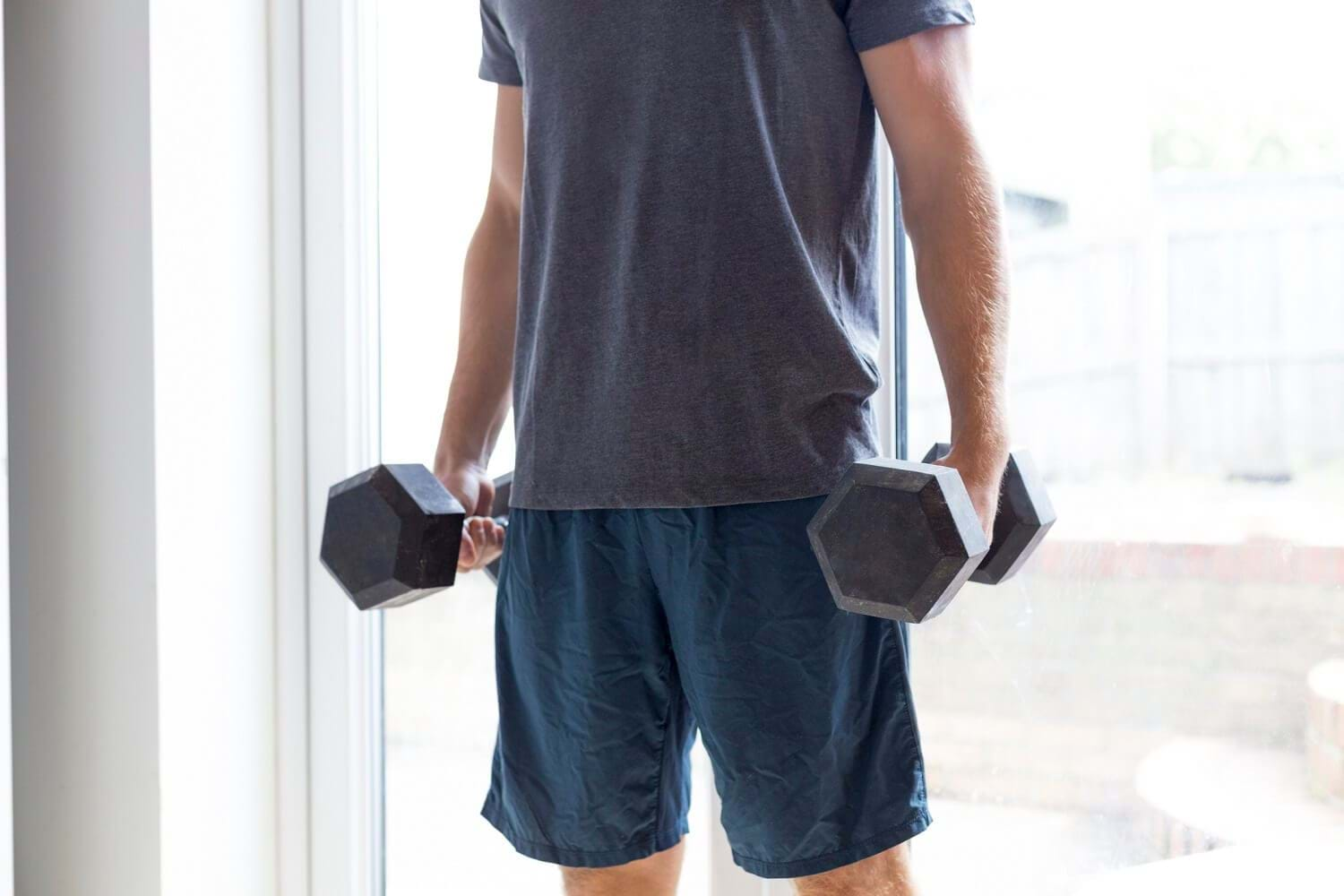Dumbbell Shrugs
What are Dumbbell Shrugs?

Jump straight to instructions here
Dumbbell shrugs are a shoulder shrug variation that uses dumbbells to target the trapezius muscle, a trapezoid shaped muscle which runs from the neck to the mid back. The rhomboids, deltoids, and forearms are also worked. Performing dumbbell shrugs can help to build shoulder and neck stability and increase back strength and size.
The dumbbell shrug is a small movement that involves shrugging your shoulders up with straight arms whilst holding a dumbbell in each hand. This exercise is simple and scalable, making them accessible for all levels. Beginners can use lighter dumbbells, and more advanced lifters can use heavy dumbbells (with lifting straps if necessary). Compared to barbell shrugs, the dumbbell version allows a slightly bigger range of motion and can help balance out imbalances between right and left.
Shrugs are a vertical pull exercise, so try pairing them with other vertical movements like bent over rows, or with horizontal movements like seated cable rows. If you are targeting shoulders, combine them with pressing movements like shoulder press.
The trapezius muscles tend to be worked a lot in daily life, so it's best to do a higher rep range of 8-10 or 12+ for shrugs. If you are new to dumbbell shrugs, or building up your trapezius strength, use lighter dumbbells and focus on technique. As you get stronger and more confident with your form, you can progress to heavier dumbbells. Adding dumbbell shrugs to workouts will increase your pulling power for compound exercises like deadlifts, and bent over rows.
Learn dumbbell shrug technique with our step-by-step guide below.
Check out other shrug exercises: Barbell Shrugs
Commonly Asked Questions About Dumbbell Shrugs
Dumbbell shrugs isolate the upper trapezius muscles, help to build strength, stability, and muscle mass in the upper back and shoulder area. Strong traps increase your pulling strength for strength exercises like deadlifts and rows, and functional movements like loaded carries. Developed traps also give the physique a strong and balanced look and can help with posture. Compared to barbell shrugs, the dumbbell variation trains each side separately which can help to address muscular imbalances and improve coordination and stability. It also uses a bigger range of motion which can help with mobility.
Dumbbell shrugs work the muscles at the top of the back, including the upper trapezius, which connect the base of the skull to the shoulders and mid-back. They also work the levator scapulae, which lift the shoulder blades, the rhomboids, and the deltoids, rotator cuff, and serratus anterior of the shoulder. Your forearm and grip muscles also have to work hard to hold the dumbbells throughout your sets.
To do incline dumbbell shrugs, set up an incline bench at 30-45 degrees. Lie face-down on the bench, with your arms hanging down. Take hold of a dumbbell in each hand. Keeping your arms straight, bring your shoulders towards the ears, squeezing the traps, then lower back to the start position.
Dumbbell shrugs are a good way to isolate the trapezius muscles to build pulling strength, muscle mass, and shape to the upper body. Dumbbell shrugs complement compound exercises like rows and deadlifts for pulling strength. Compared to barbell shrugs, dumbbell shrugs helps address muscle imbalances because they allow each side to work independently.
Dumbbell Shrug Tips
Relax your neck and focus on shrugging the shoulders up and slightly back.
Choose dumbbells that allow you to do at least 8 reps.
Reduce the weight if you can’t pause each rep at the top.
How To Do Dumbbell Shrugs
Lift the dumbbells out of the rack or from the floor and stand up straight with your feet shoulder width apart.
Start with your arms hanging straight down by your sides, dumbbells against the outside of your thighs.
Relax your neck, allowing the chin to lightly drop, and brace your core.
Shrug your shoulders up and slightly back towards your ears.
Keep your arms straight during the movement, focusing the work in the trapezius muscles.
Pause at the top of the rep to squeeze the traps.
Lower with control and repeat for reps.
If you’re not sure if any of the above exercises are suitable for you, please consult your doctor before you start it. Need guidance on how to perform the exercise? Ask a personal trainer at your gym.